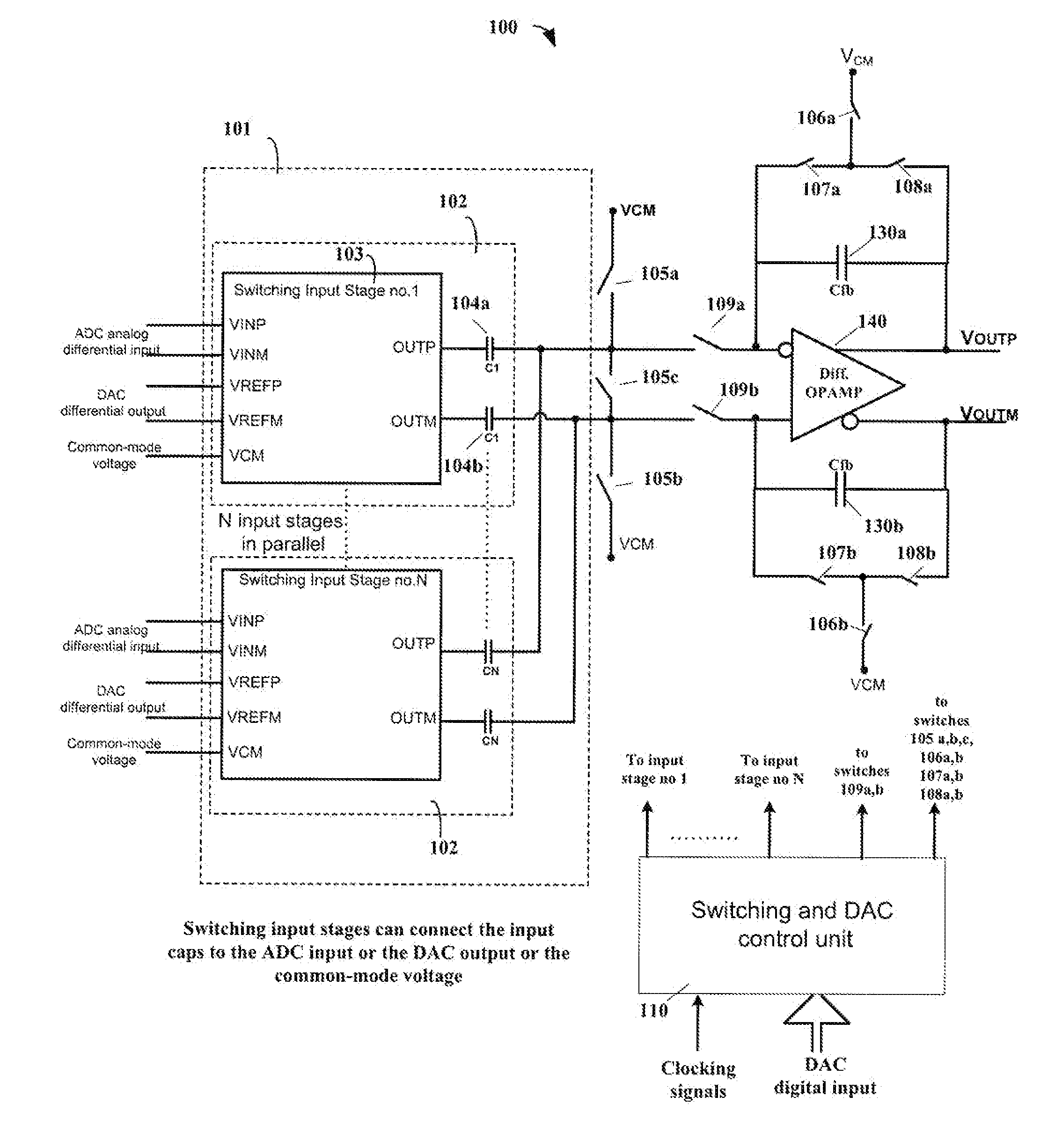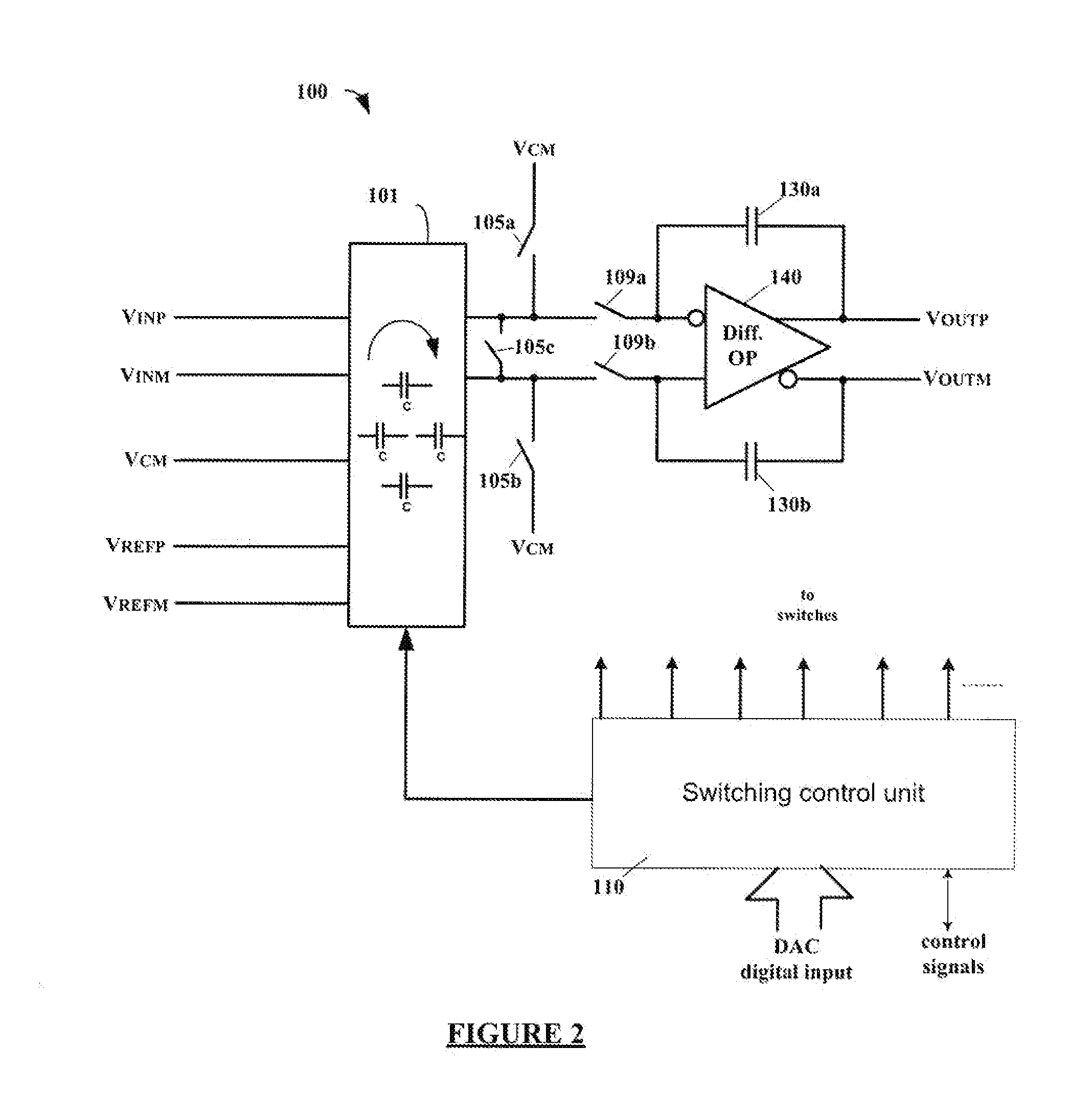2-phase gain calibration and scaling scheme for switched capacitor sigma-delta modulator using a chopper voltage reference
a sigma-delta modulator and switched capacitor technology, applied in the field of analog-to-digital converters, can solve problems such as large errors, modulators giving erroneous results, and modulators becoming unstabl
- Summary
- Abstract
- Description
- Claims
- Application Information
AI Technical Summary
Benefits of technology
Problems solved by technology
Method used
Image
Examples
Embodiment Construction
sible states for each stage (in this representation the number of input stages is limited to 5);
[0021]FIG. 7 shows an example of a rotation algorithm to perform the 2-phase gain scaling and gain error cancellation which is not depending on the DAC input states;
[0022]FIGS. 8a and b show another example of a rotation algorithm to perform the 2-phase gain scaling and gain error cancellation, but which is depending on the DAC input states;
[0023]FIG. 9 shows the state diagram for the rotation algorithm that is depending on the DAC states (DAC input dependent algorithm) and that performs gain scaling and gain error cancellation;
[0024]FIG. 10 shows a block diagram of a chopper voltage reference; and
[0025]FIG. 11 shows an example of yet another rotation algorithm when a chopped voltage reference is used.
DETAILED DESCRIPTION
[0026]According to various embodiments, a sigma-delta modulator that can use only two phases instead of four per each sample with less power consumption (due to less stri...
PUM
 Login to View More
Login to View More Abstract
Description
Claims
Application Information
 Login to View More
Login to View More - R&D
- Intellectual Property
- Life Sciences
- Materials
- Tech Scout
- Unparalleled Data Quality
- Higher Quality Content
- 60% Fewer Hallucinations
Browse by: Latest US Patents, China's latest patents, Technical Efficacy Thesaurus, Application Domain, Technology Topic, Popular Technical Reports.
© 2025 PatSnap. All rights reserved.Legal|Privacy policy|Modern Slavery Act Transparency Statement|Sitemap|About US| Contact US: help@patsnap.com



